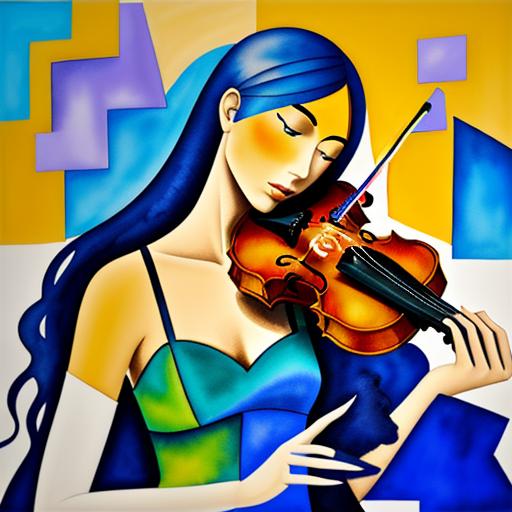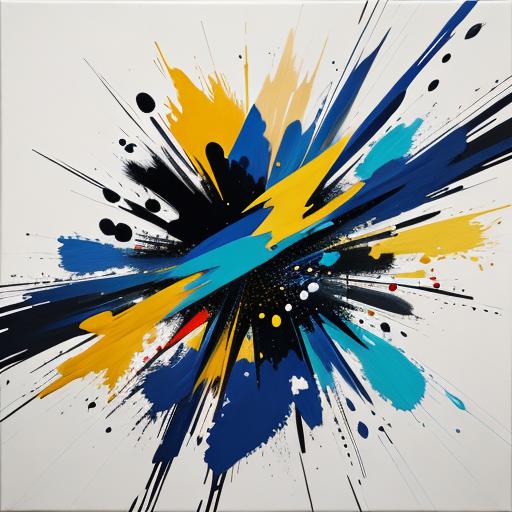Have you ever stood in front of a splashy abstract painting and thought, “What in the world am I looking at?” Don’t worry—you’re definitely not alone! In this guide we are going to investigate How to Discover Meaning in Abstract Art. Art can seem super confusing at first, but discovering meaning in those swirls, splashes, and shapes can be like going on an awesome treasure hunt where YOU get to decide what the treasure is! Let’s explore how you can become an abstract art detective and find your own special meanings in art that doesn’t look like “real stuff.”
Key Points to Remember
- Abstract art uses colors, shapes, and textures instead of realistic objects
- Your personal reactions and feelings are valid ways to understand abstract art
- Colors and shapes have their own special “language” you can learn
- There’s no single “right answer” when it comes to understanding abstract art
- Taking your time and asking fun questions helps you connect with abstract art
- Your own experiences and imagination help complete the artwork
What Makes Abstract Art Different from Other Art?
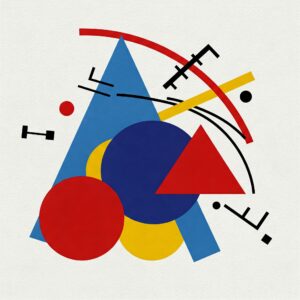
Abstract art is like the rebel of the art world! Instead of trying to paint perfect copies of flowers or people’s faces, abstract artists decided to break all the rules. They use colors, shapes, lines, and textures to express feelings, big ideas, or sometimes just to create something that looks super cool!
Think of it like music without words. When you hear an amazing instrumental song, you don’t say, “But what are the lyrics?” You just feel the emotions the music creates. Abstract art works the same way—it’s all about the feelings and ideas that pop into YOUR head when you look at it!
The History of Breaking the Rules
Abstract art didn’t just appear out of nowhere. Artists like Wassily Kandinsky started experimenting around 1910, gradually moving away from painting things that looked like real life. Kandinsky even believed that colors and shapes could express music and emotions!
As the 20th century zoomed along, more artists joined the abstract party. The amazing thing is that each artist found their own unique way to be abstract:
- Some used geometric shapes and bright colors
- Others preferred big color fields that seem to glow
- Some splashed and dripped paint in energetic ways
- And others created optical illusions that make your eyes go crazy!
Your Feelings Matter: First Steps to Understanding Abstract Art
Trust Your Gut Reaction
The coolest thing about abstract art? Your first reaction is already the beginning of understanding it! When you look at an abstract painting, ask yourself:
- How does this make me feel? Happy? Confused? Excited? Calm?
- What does it remind me of, even if it’s not showing actual things?
- If this painting was making noise, what would it sound like?
“Abstract art is not about what you see, but what you make others see.”
Edgar Degas
These gut reactions are like your personal key to unlocking the painting’s meaning. There’s no “wrong” way to feel about abstract art!
The Secret Language of Colors
Colors in abstract art are like a secret code that speaks directly to your emotions:
| Color | Common Emotional Responses |
|---|---|
| Red | Energy, passion, danger, excitement |
| Blue | Calm, peace, sadness, depth |
| Yellow | Happiness, optimism, attention-grabbing |
| Green | Nature, growth, freshness, harmony |
| Purple | Mystery, royalty, spirituality |
| Black | Power, elegance, mystery, emptiness |
| White | Purity, simplicity, cleanliness, possibility |
When you look at Mark Rothko’s color field paintings, pay special attention to how those big blocks of color make you feel. That feeling is part of the meaning!
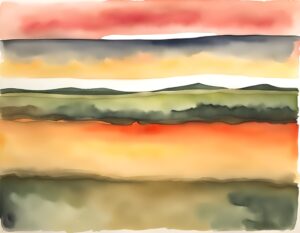
Shapes Tell Stories Too!
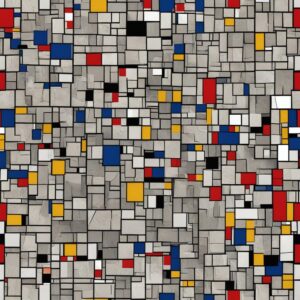
Even without showing actual things from real life, the shapes in abstract art can make you feel different ways:
- Circles feel complete, harmonious, and peaceful
- Squares and rectangles feel stable, organized, and trustworthy
- Triangles feel dynamic, energetic, or sometimes dangerous
- Jagged, irregular shapes might feel chaotic or exciting
- Flowing, curvy shapes often feel natural and calming
Artists like Piet Mondrian used simple geometric shapes and primary colors to try to create perfect visual harmony. His grid-like paintings might not show “things,” but they definitely make you feel something!
Becoming an Art Detective: Fun Ways to Explore Abstract Art
Play the “If This Art Was…” Game
Try these fun thought experiments next time you’re looking at abstract art:
- If this painting was weather, what kind would it be? A thunderstorm? A sunny day? A foggy morning?
- If this artwork was food, what would it taste like? Sweet? Spicy? Smooth? Crunchy?
- If this painting was a movie, what genre would it be? Action? Romance? Science fiction?
These questions help you connect with the artwork in super creative ways that make abstract art more relatable and fun!
The Moving-Around Method
Here’s a cool secret – abstract art looks different depending on how you view it! Try these awesome viewing tricks next time you’re at an art museum:
- Stand super close to see brushstrokes, texture, and details
- Step way back to see overall patterns and composition
- Squint your eyes to simplify what you see (this helps you focus on big shapes and colors)
- Tilt your head for a new perspective
You might be surprised how the same painting can look totally different from various distances and angles!
Make Up Your Own Stories
Even though abstract art doesn’t show specific things or tell obvious stories, you can create your own! Maybe those swooping lines remind you of:
- A roller coaster ride you went on last summer
- The feeling of running down a hill super fast
- How music flows through the air when you listen to your favorite song
Your personal connection to the artwork is what makes abstract art so special and unique.
Famous Abstract Artists and Their Secret Messages
While YOU get to decide what abstract art means to you, it’s also cool to learn what the artists were trying to express!
Jackson Pollock: The Splash Master

Jackson Pollock became famous for his wild “drip paintings” where he would fling, pour, and splash paint across huge canvases laid on the floor. He wasn’t just making a mess—he was trying to capture the energy and freedom of pure emotion! Pollock called his technique “action painting” because the physical act of making the art was just as important as the finished painting.
For a deeper dive into this splashy style, check out our guide to Abstract Expressionism, where artists turned their big feelings into powerful abstract works!
Wassily Kandinsky: The Music Painter
Kandinsky had an amazing ability called synesthesia, which meant he could literally “see” music as colors and shapes! When he listened to music, colors and patterns would pop into his mind, which he then painted. His abstract paintings are like visual music!
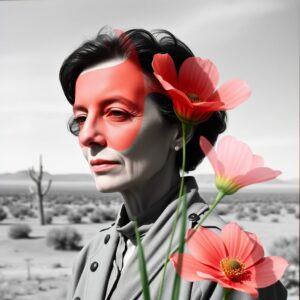
Georgia O’Keeffe: Finding the Abstract in Nature
O’Keeffe painted close-ups of flowers and landscapes that became so zoomed-in they turned abstract. Her work shows us that even in nature, there’s abstract beauty hiding everywhere—you just have to look closely enough!
Try It Yourself: Becoming an Abstract Artist
Want to understand abstract art even better? Try making some yourself! Here are some super fun techniques from our beginner’s guide to abstract painting:
- Emotion Painting: Pick a feeling (like joy, sadness, or excitement) and try to express it using only colors and shapes.
- Music Painting: Play your favorite song and paint what the music makes you see or feel.
- Nature Abstraction: Look at something in nature (like a leaf or cloud) and simplify it into basic shapes and colors.
- Splatter Art: Channel your inner Pollock and experiment with flinging or dripping paint!
Making abstract art helps you understand it from the inside out—and it’s super fun!
You’re the Meaning-Maker!
The most amazing thing about abstract art is that it’s like a partnership between the artist and YOU. The artist starts the conversation with colors, shapes, and textures, but YOU help finish it with your own feelings and ideas.
When you look at abstract art, you’re having a conversation with the artist across time and space. How cool is that?
So next time you see an abstract painting that makes you go “Huh?”, remember that your reaction—whatever it is—is already the beginning of understanding. There’s no wrong way to experience abstract art!
Ready to explore more? Check out the top 10 abstract artists of all time or plan a visit to your local art museum. Your abstract art adventure is just beginning!
Have you had a special experience with abstract art? What abstract artwork has made you feel strong emotions? Share your art adventures in the comments below!


